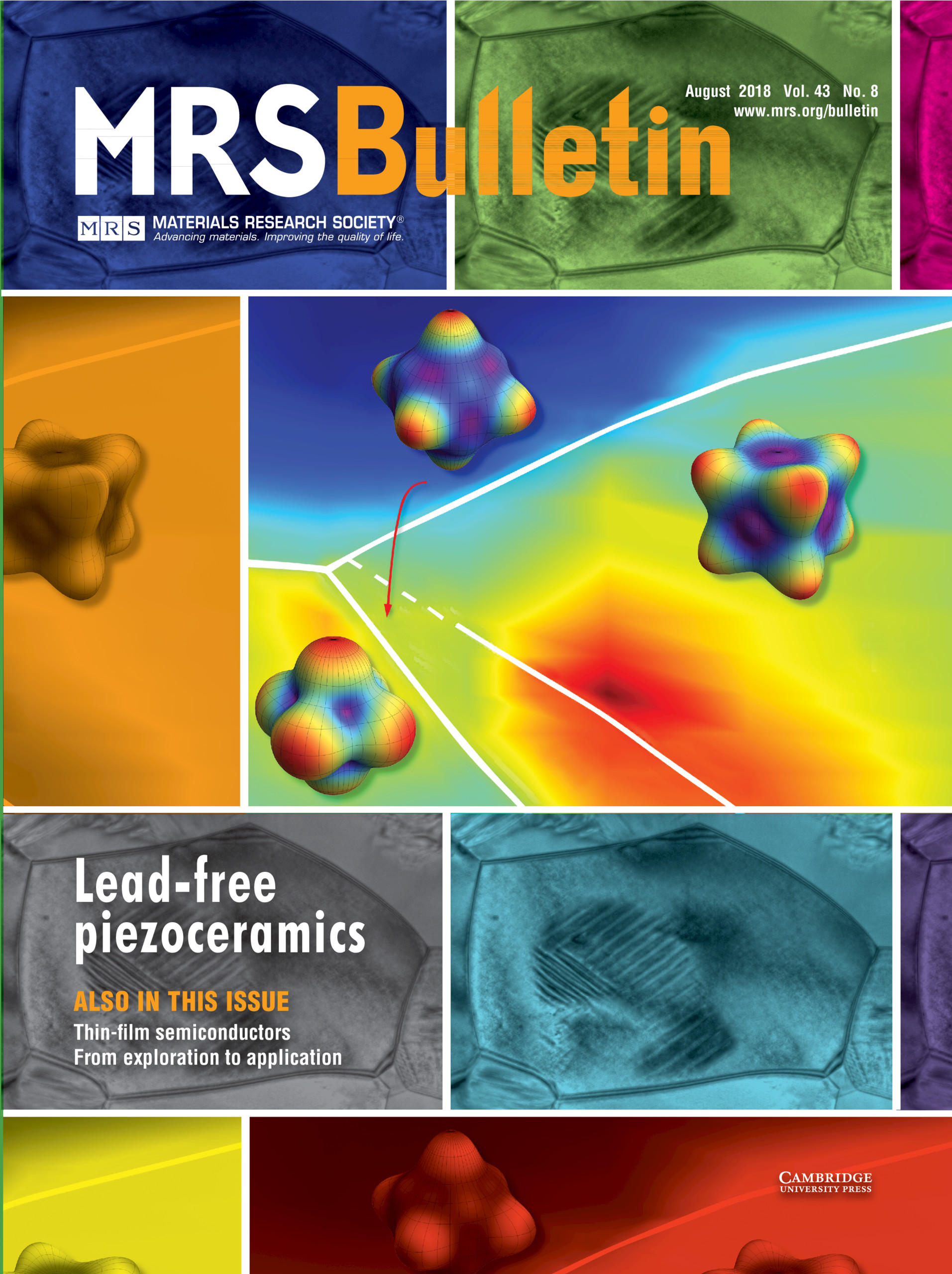MSE Faculty Article on Piezoelectric Ceramics Featured in August 2018 MRS Bulletin
MSE professor Dr. George A. Rossetti, Jr., in collaboration with Dr. Dragan Damjanovic (Swiss Federal Institute of Technology in Lausanne), has published an article in the August 2018 issue of the Materials Research Society (MRS) Bulletin. The paper, “Strain Generation and Energy-Conversion Mechanisms in Lead-Based and Lead-Free Piezoceramics,” analyzes the origins of piezoelectric activity in technologically important ceramic materials used as actuators and sensors. Concepts discussed in the paper are featured on the journal cover.
Piezoelectric ceramics (piezoceramics) convert electrical into mechanical energy, and vice-versa. They are found in many products encountered in everyday life, including spark igniters, buzzers, ultrasonic cleaners, inkjet printers, fuel injectors and medical ultrasound diagnostic equipment, just to name a few. They are also vital to the sonar systems used in submarines and other undersea vehicles.
For over 60 years, the most important piezoceramic materials have been based on the ferroelectric solid solution lead zirconate-titanate (Pb[Zr1-xTix]O3or PZT). About 15 years ago, however, legislation in Europe and elsewhere restricting the use of lead-containing materials in electronics triggered an effort to find lead-free piezoceramics that could replace PZT in many, if not all, applications.
Doing so has proved to be a difficult task. The mechanisms of piezoelectricity in ceramic materials involve complex electrical and elastic interactions spanning length and time scales, from intrinsic mechanisms involving the motion of atoms within a unit cell, to extrinsic mechanisms involving the motion of ferroelectric domain walls. The lone-pair ion Pb2+ in PZT is a key factor in its superior electromechanical performance, since it produces a large distortion of the unit cell, enhances the material’s electric polarizability and increases the stability of the piezoelectric properties to changes in temperature. Because lead is so unique in this way, it’s hard to duplicate its advantages with other materials.One strategy for achieving high piezoelectric activity in lead-free ceramics is to exploit intrinsic mechanisms involving the extreme softening properties that occurs near structural phase transitions, wherein the electric polarization vector changes from one crystallographic direction to another.
For example, in lead-free solid solutions emulating the phase diagram of PZT, such as barium-calcium titanate-barium zirconate-titanate (BCT-BZT), compositions near the tetragonal – orthorhombic phase boundary produce strong increases in shear elastic compliance and transverse dielectric permittivity that result in piezoelectric coefficients exceeding those in many lead-based systems.
Another strategy involves doping lead-free materials with carefully chosen ions that can modify the mobility of ferroelectric domain walls. The dopants may either enhance domain wall motion and increase the strain response, or impede it and reduce energy losses. Doping can thus improve the piezoelectric properties for particular applications, such as for actuators where a large mechanical strain is needed, or for high-power, high-frequency transducers where improved electromechanical energy conversion efficiency is more important.
These approaches have so far been only partially successful. As with lead-based piezoceramics, there are tradeoffs that may prevent the substitute material from being used in certain applications. The MRS Bulletin article by Damjanovic and Rossetti provides a detailed analysis of what has been learned so far regarding the mechanisms of piezoelectric activity in ceramic materials – and clues for promising areas of future research.
Published: September 3, 2018
Categories: faculty, news, research
Available Archives
